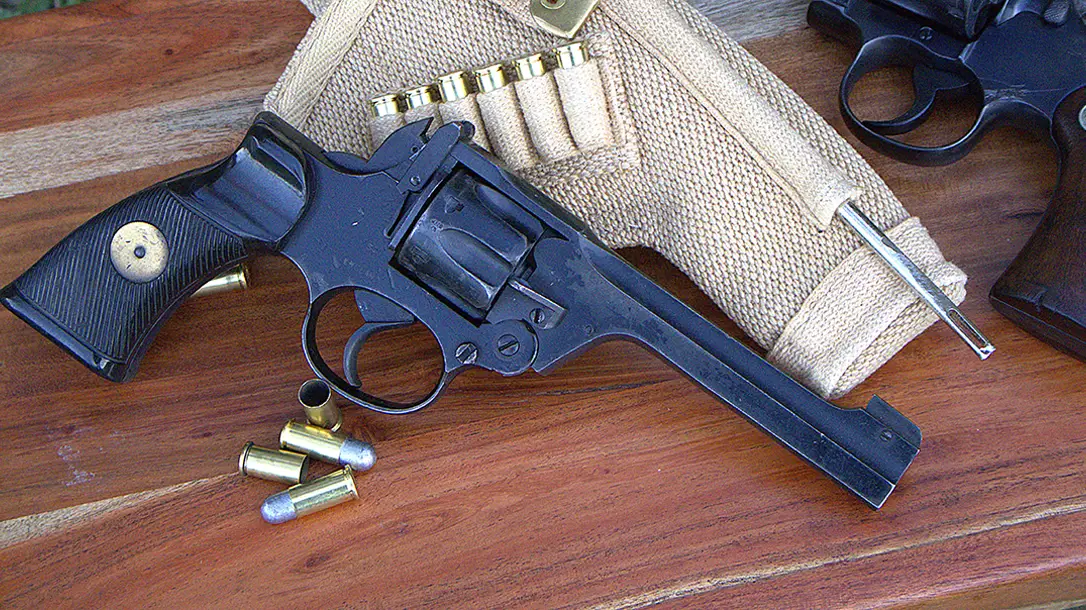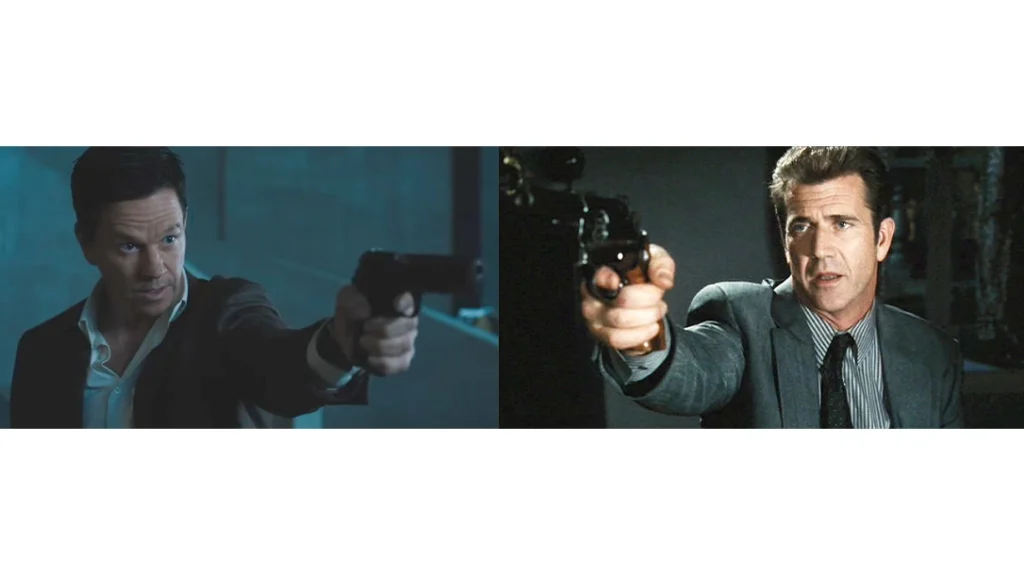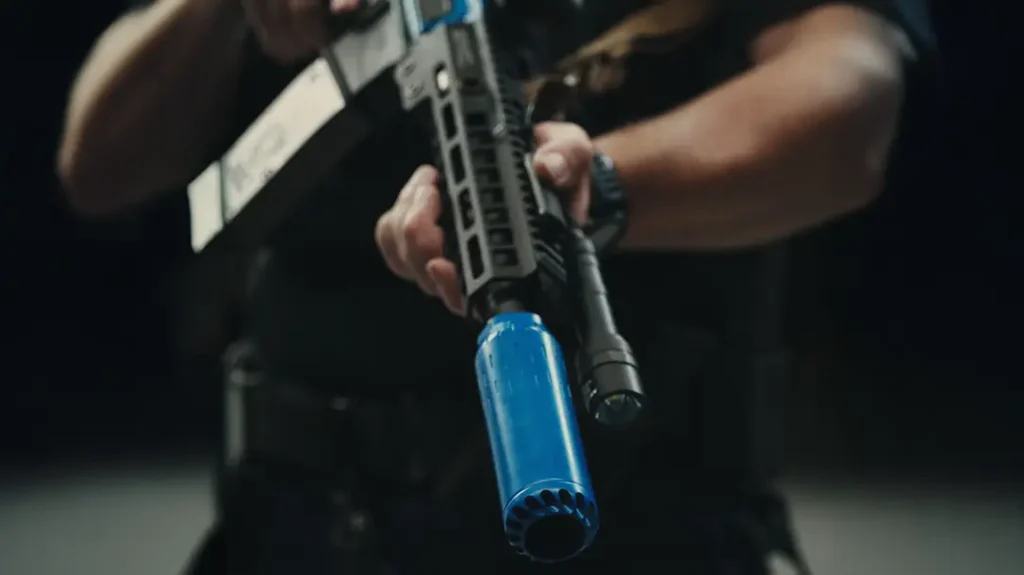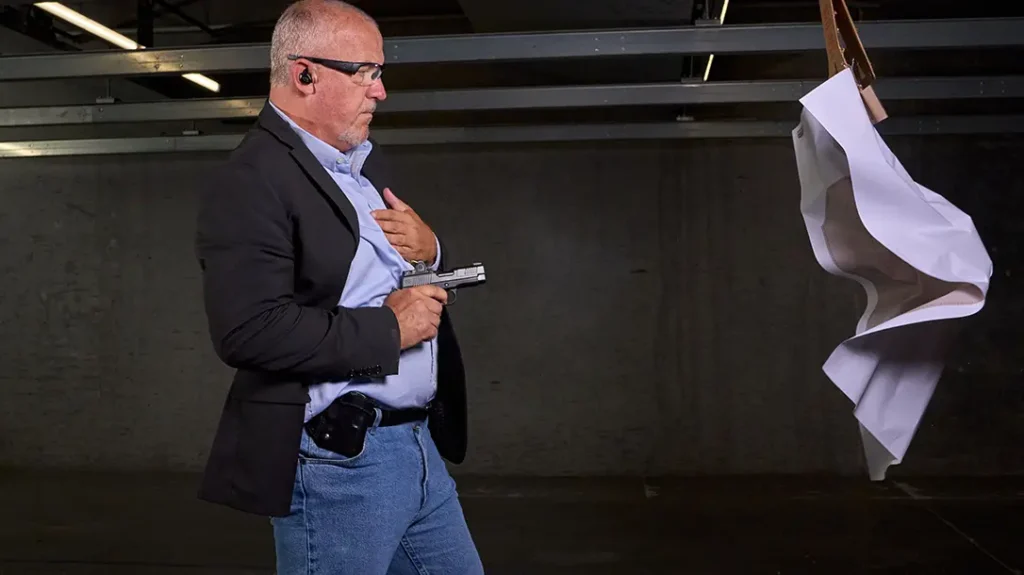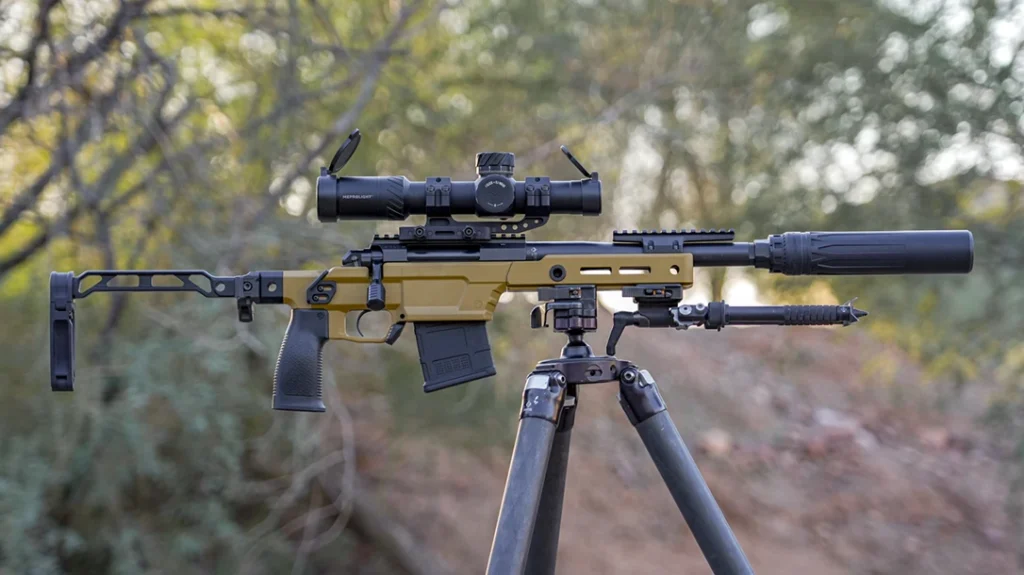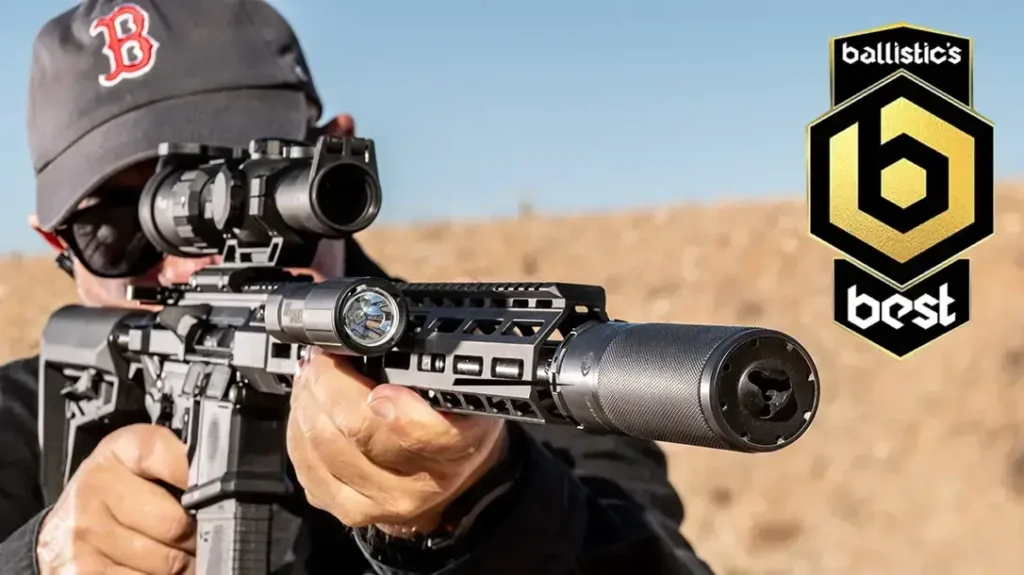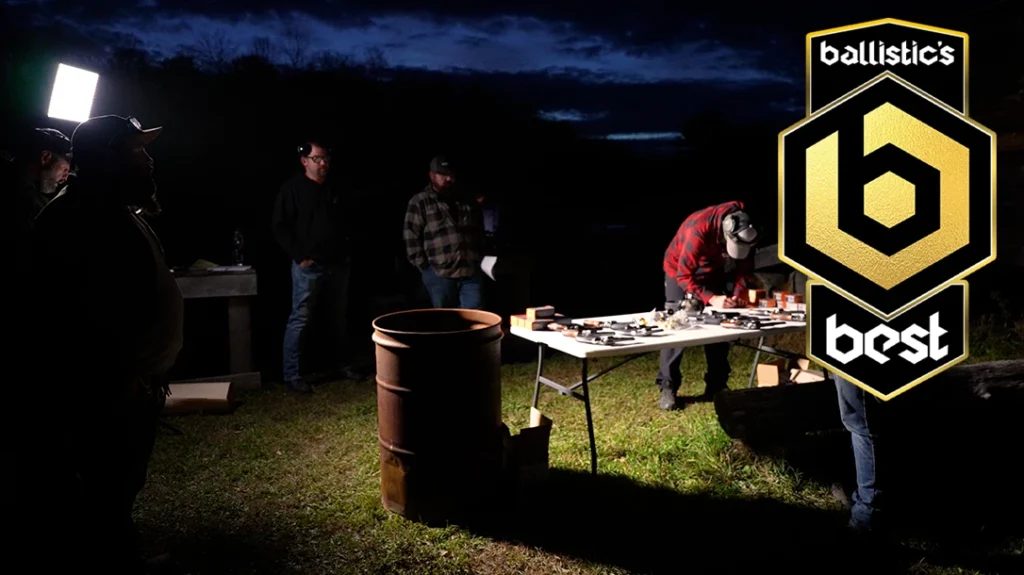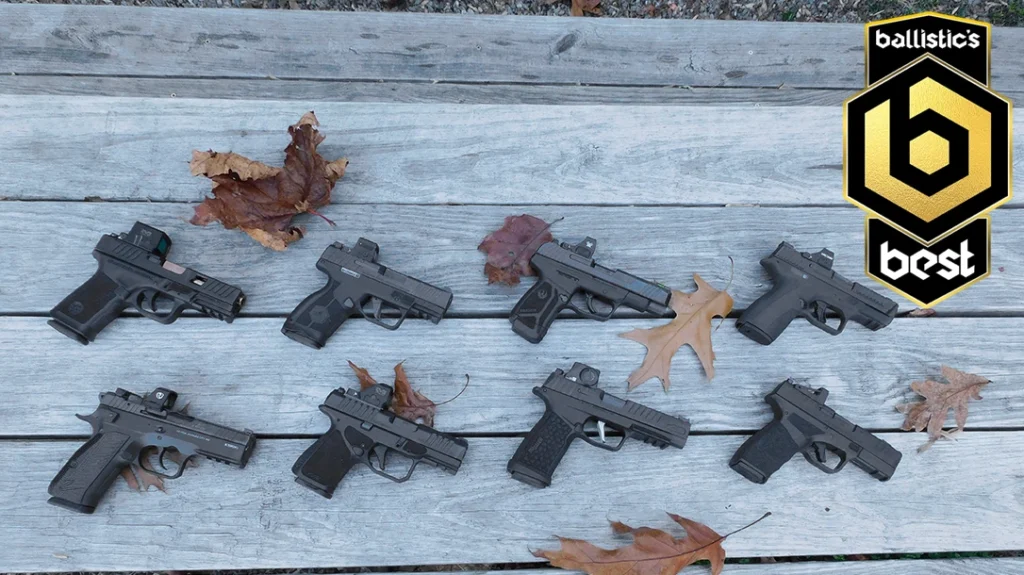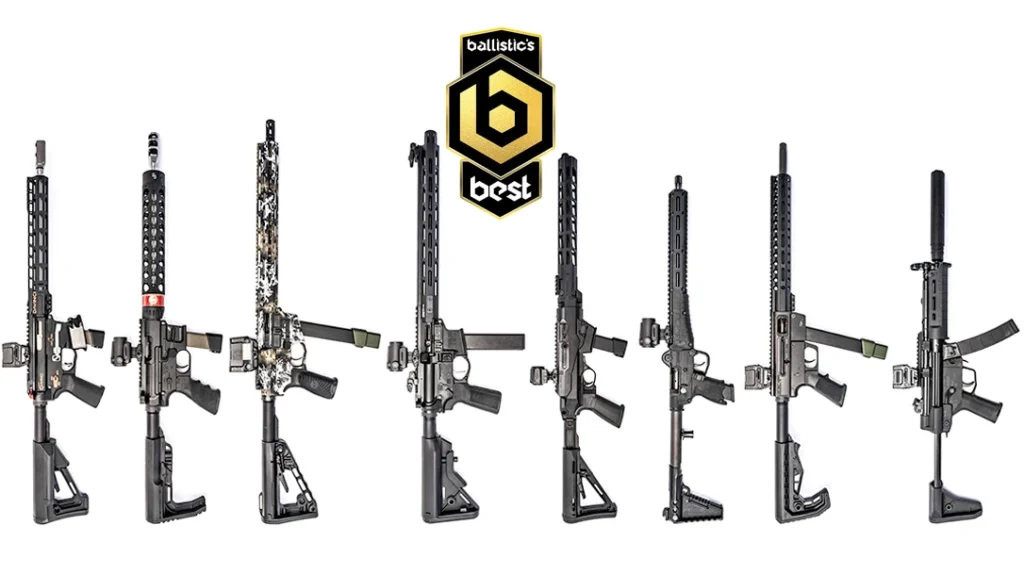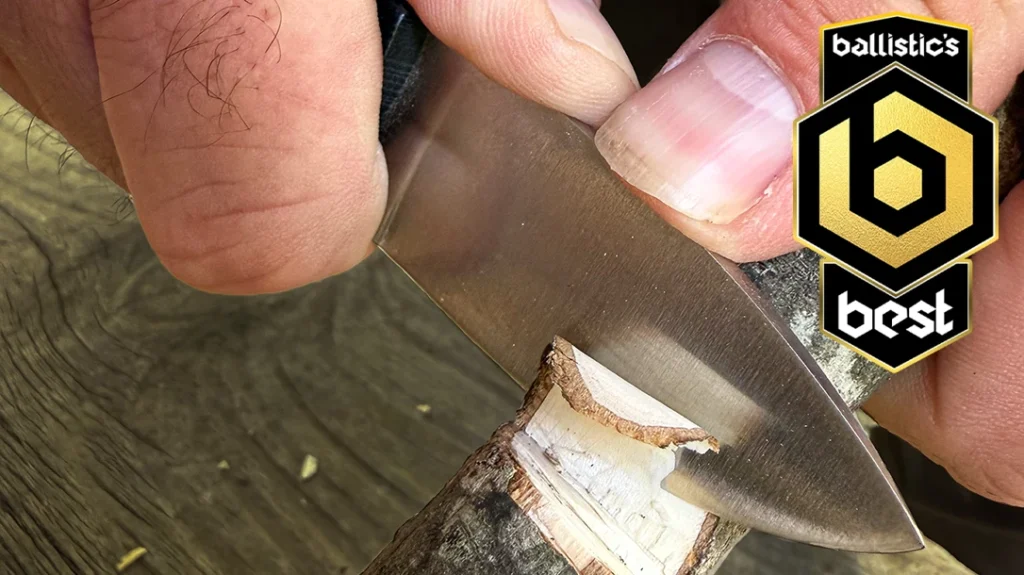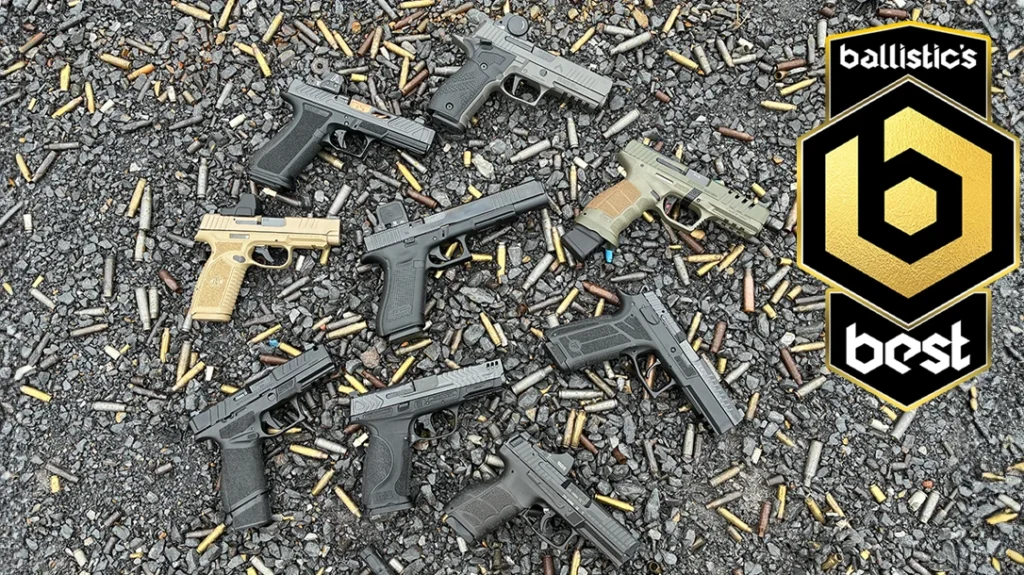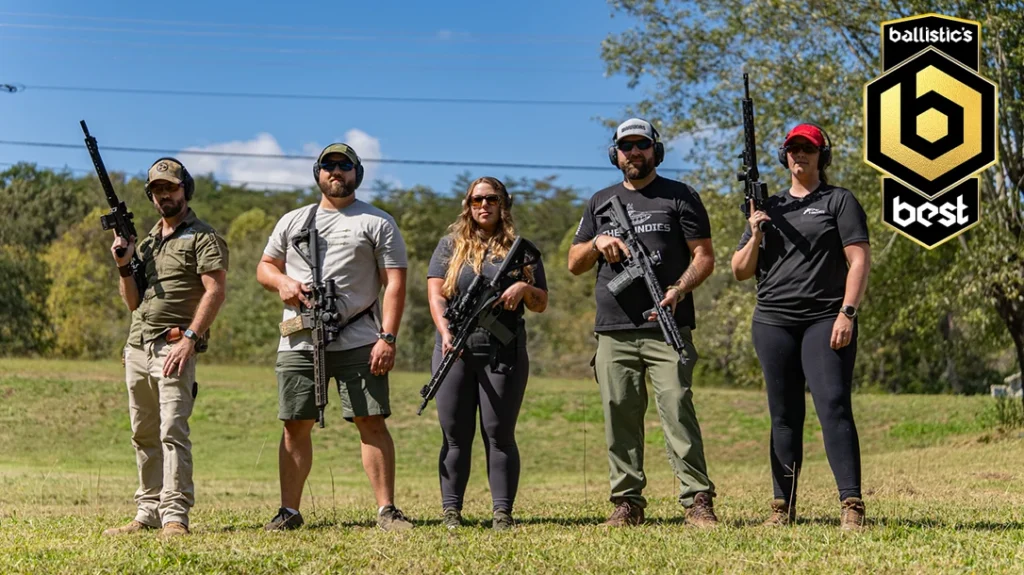The Webley revolver is one of the finest fighting handguns of the 20th century. This big bore .455 caliber top-break revolver was first adopted in 1887 by the British Army and faded completely from service in 1963. Between those years and the time since Webley became a cinema icon and a muscular stand-in for all things British. To follow the .455 Webley is akin to George Lazenby’s misfortune to follow Sean Connery as James Bond. During the economic troubles and cautious rearmament of the 1930s, just such a follow-up to the .455 was adopted in the Enfield No. 2 revolver.
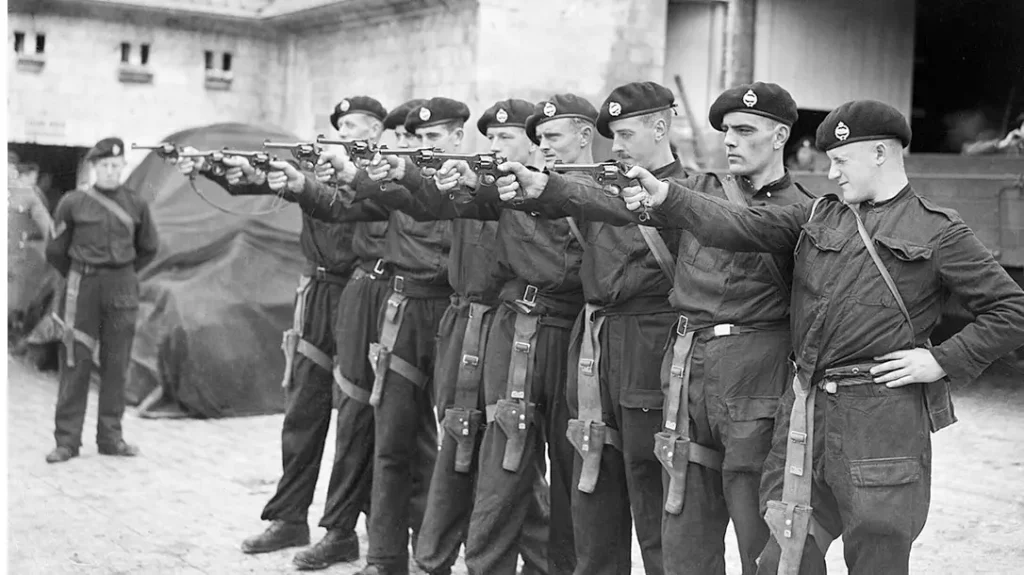
The Enfield No. 2 Revolver – Was it the Last and Worst British Service Revolver?
The No. 2 Mk. 1 was an uninspiring choice at its adoption and increasingly cast aside for American revolvers and semi-automatic pistols after the outbreak of the Second World War. But hindsight is 20/20. On Her Majesty’s Secret Service is often ranked as among the best Bond films. Given the baggage of its development and use, the Enfield revolver is also due for a reevaluation. Far from being one of the worst handguns of World War II, it was a conservative effort blended with forward-thinking ideas. It is also a hoot to shoot.
Advertisement — Continue Reading Below
To Build a Better Revolver: The Development of the Enfield Revolver
Although the British Empire stood at its height in terms of territory in the early 1930s, the homeland was mired in uncertainty. The First World War ended in victory but at tremendous costs. Over 900,000 men died, and British society could scarcely cope with caring for the wounded. The United States passed Britain to become the world’s industrial power. Worse, Britain had underwritten loans for herself and her allies to the United States at the tune of over $10 billion—twice the amount of currency in the American economy at the start of the war.
The Great Depression was a mild speedbump, as the British economy fell into stagnation in 1920 and had yet to emerge. The 1931 Act of Dominion was an admission that the Empire had become too costly to manage, and the colonies were increasingly delegated autonomy in an expanse that increasingly looked like a trade association. But threats to Britain and her Commonwealth began to emerge. In Germany, the expansionist Nazi party made political history in the 1930 election from arising from nothingness to the second largest party in the Reichstag. The following year, Japan flouted international condemnation and invaded Manchuria.
Rearmament Needs
Rearmament had to happen, but it had to be on a budget. The British Army conservatively tested new rifles that had no immediate fruit. The handgun trials were a different story. The Webley Mk. VI in .455 revolver had been a standard issue since 1916, and it found favor during the war as handguns grew in importance as a tool of trench warfare. The .455 was renowned for its stopping power, and the break-top action was utterly familiar, fast, and reliable. In the pre-1914 Army, the revolver was almost universally a commissioned officer’s weapon. Officers were expected to supply their own guns and ammunition and were expected to develop proficiency on their own.
Advertisement — Continue Reading Below
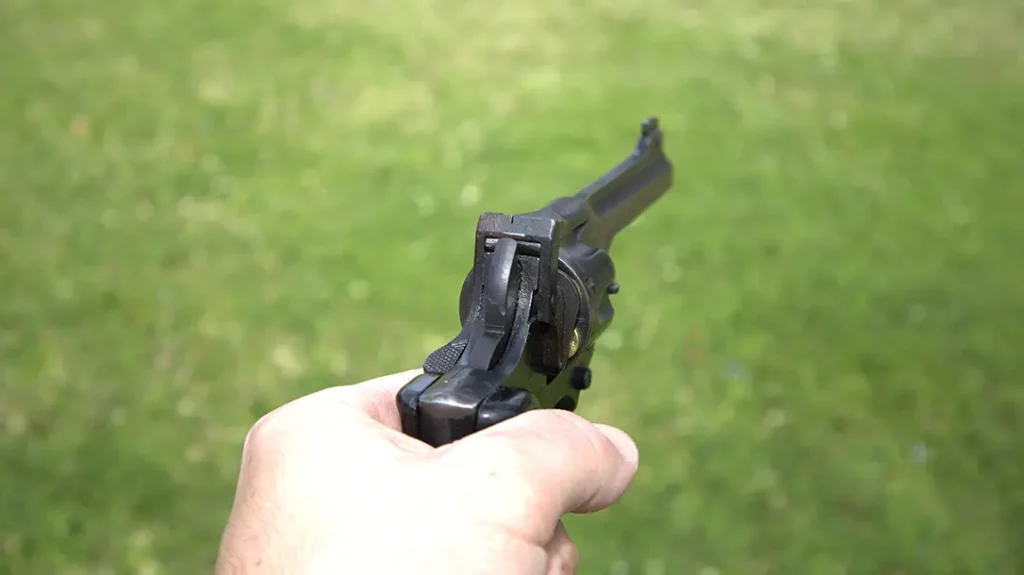
Troubled Times
This system was a mess regarding logistics and uniform training, which worsened as more ranks needed handguns. It did not help that the .455 was a substantial handgun to master. The British Board of Ordnance believed a smaller, lighter-caliber handgun would better equip a rapidly expanding military.
The Board turned to Webley & Scott, the masterminds of the Webley revolver, to develop a new revolver to suit the task. Webley developed what would become the Mk. IV and a new cartridge designed to be easy shooting but ballistically similar to .455 Webley—the .38-200.
Advertisement — Continue Reading Below
The .38-200 cartridge is derived from the .38 S&W cartridge. That cartridge was developed for small-framed handguns, but by the 1930s, was in decline as the .38 Special climbed. One load that held on, particularly in police work, was the .38 Super Police—a variant of the .38 S&W that featured a 200 grain lead bullet instead of the usual 145 grain round normally used in the cartridge.
Slow Heavy Round
This slow, heavy round was designed to dump its energy into the intended target. The rudimentary tests of the day showed that this round wounded similarly to .455 Webley. The cartridge was adopted wholeheartedly, but instead of turning to Webley to produce their revolver, the Board commissioned the government arsenal at Enfield to produce their own model. The result was the Enfield No. 2 Mk. I, which is mechanically identical and prompted a lawsuit from Webley. The government ultimately found that the government broke no compact but awarded Webley a small sum for development costs. Nonetheless, the British Army had its new handgun.
The No. 2 Mk. I was lighter, handier, and easier to shoot than the Webley .455, but it was hardly earth-shattering. It featured an identical top-break action, a five-inch slab-sided barrel, and low-mounted walnut grips. Like most revolvers, it was a double action/single action handgun with an exposed hammer that could be cocked for a lighter trigger pull, or the revolver could be fired by simply pressing the trigger all the way through with a heavier pull. It features a removable high-visibility front post sight and a wide rear sight that is integral to the cylinder latch.
Advertisement — Continue Reading Below
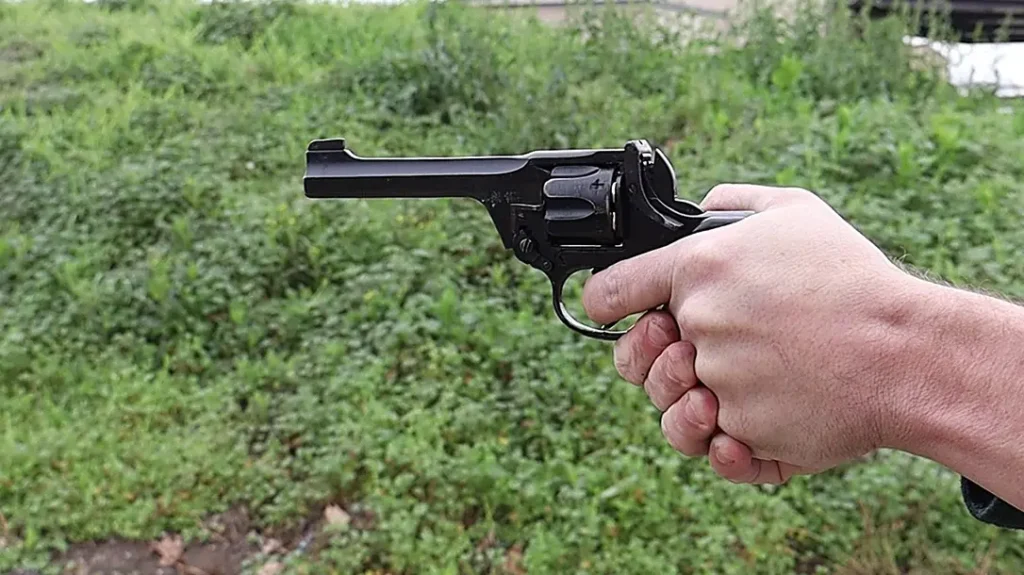
Gun Modifications
This conventional arrangement did not last. As rearmament accelerated, changes were made to speed up production. The training was also modified. In 1938, Enfield began producing their revolvers sans hammer spur, and existing models had their hammers removed when they came in for armory work. The grips were also changed to a high, wide bakelite with thumb grooves on both sides to facilitate a high purchase on the revolver. This variant became known as the No. 2 Mk. I *. During the war in 1944, Enfield began distributing revolvers without hammer block safeties to speed up production further—the No. 2 Mk. I** was unsafe to carry fully loaded, and most were reconverted from the previous configuration.
Firearms historians opined that these changes began because tank crewmen found that the exposed hammer of the revolver snagged on hatches as they bailed out of their tanks. However, the economics of expanding and expanding an army dictated this and the other subsequent changes. Enfield had to cut corners to keep up with production, and the government had to crawl back to Webley to produce their Mk. IV. They also commissioned hundreds of thousands of American Colt Official Police and Smith & Wesson M&P revolvers in .38-200 and made ample use of Colt M1911s, Browning Hi-Powers, and old .455s. Handgun training also suffered. Pre-war training that emphasized single-action bullseye shooting devolved to rapid double-action pairs from the hip at close range.
Advertisement — Continue Reading Below
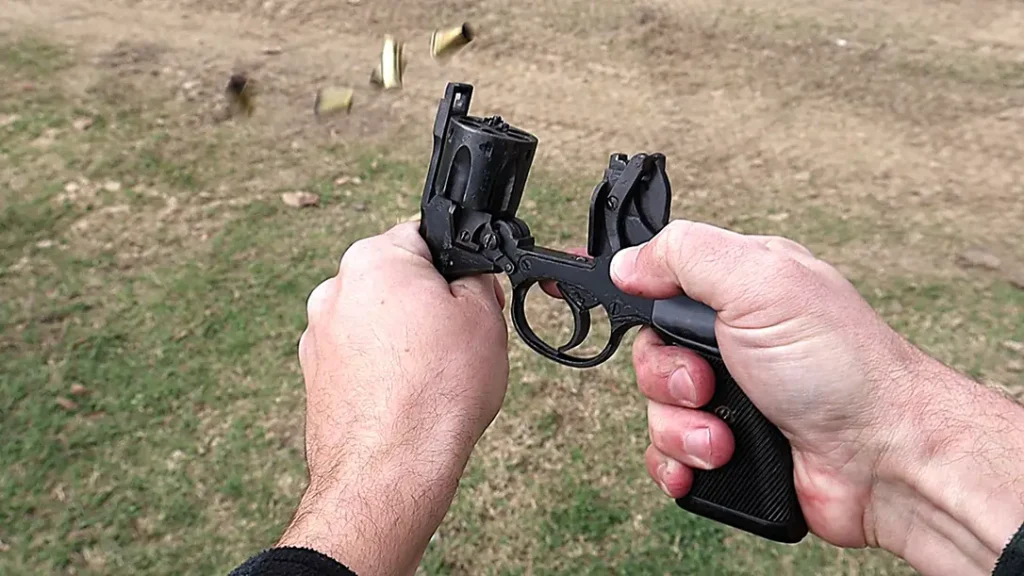
Hi-Power
By the end of the war, the SOE and Airborne forces came to favor the Hi-Power, a 13-shot 9mm handgun. As with its adoption, British economic doldrums kept the Enfield in service. It was a standard issue throughout the Korean War and was unceremoniously replaced by the Hi Power in 1954. But it was not until 1963 that the numbers justified retiring the Enfield for good.
Quick Specs: Enfield No. 2 Mk. I*
- Caliber: .38/200 (.38 S&W)
- Capacity: 6
- Barrel Length: 5.0 inches
- Overall Length: 10.0 inches
- Width: 1.75 inches at the cylinder
- Weight: 1 lb. 11 oz. (loaded)
- Action: Double Action Only Hammer Fired
The Enfield No. 2 on the Range
Although it is not nearly as well known as the Webley series, the antics around its adoption and its status as the last of the British break-tops have always interested me. Some have even opined that the Enfield is, perhaps, the worst sidearm of World War II. I’ve shot my fair share of Nambus and Nagants to know that is probably an overstatement. When I stumbled upon a worse-for-wear example of the Enfield No. 2 at my local shop, I had to pick it up simply to see what it was like.
Advertisement — Continue Reading Below
My particular revolver is an Enfield No. 2 Mk. I* pattern revolver that is double action only and distinctive high horn synthetic grips. I dated it to 1942, and the revolver certainly looks its age. The lanyard ring at the bottom of the grip was missing. The parkarization has faded black and chipped out in places. The stirrup latch has a slight amount of give, and there is perceivable movement between the grip frame and the cylinder frame. But with the trigger pulled, it locks up tight. It also has an excellent bore.
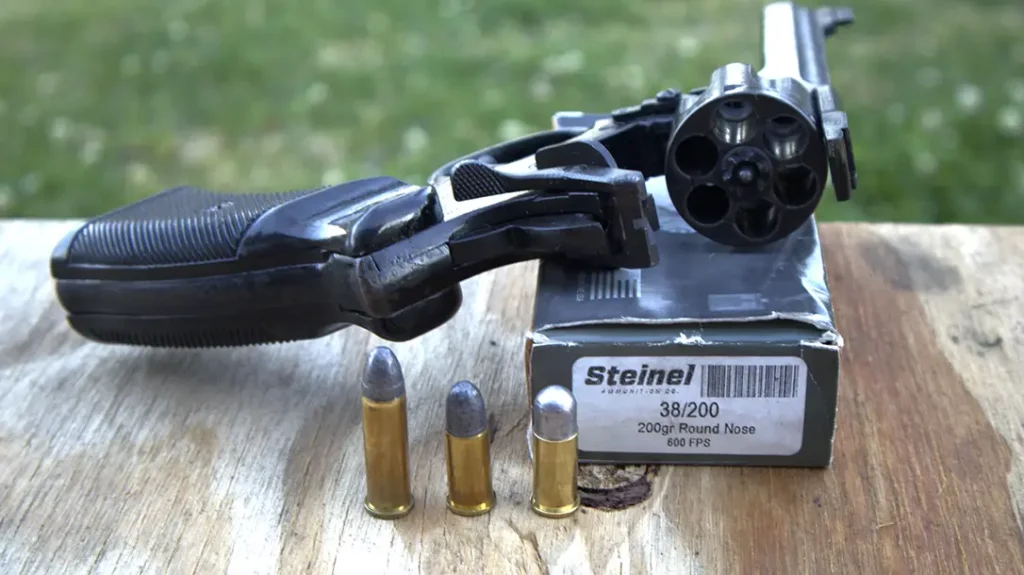
India still makes runs of .38/200 military ammunition, which I have never seen offered on the American market. Thankfully, we can run standard .38 S&W ammunition without a problem. Most major manufacturers make limited runs of a lightly loaded .38 S&W cartridge with a 145-grain lead or jacketed FMJ bullet. Buffalo Bore even offers a 125-grain hard cast offering intended for personal defense. I happened to have a box of Remington 145 grain lead rounds but to experience the Enfield as intended; I grabbed a box of Steinel Ammunition’s .38/200 Military Load. It features a genuine 200-grain lead bullet like the original loading.
Advertisement — Continue Reading Below
Loading the Enfield
Loading the Enfield No. 2 Mk. It is simple and would have been more so for a veteran, Tommy. The only control on the Enfield is the stirrup latch. A firm press releases the cylinder and barrel to tilt out. As the frame hinge goes forward in its travel, a cam snaps the ejector up and back down. The cylinder is then loaded with loose ammunition, the release latch depressed, and the cylinder frame hinged back home. Unloading is perhaps the most entertaining aspect of shooting the Enfield, as the ejector chucks out all the empty cases at once when the revolver is briskly opened.
Aside from its unique loading and unloading feature, the Enfield behaves like a more modern take on a duty revolver than what was available in the 1930s and 1940s. Modern revolver shooters optimized for carry often feature a high horn grip to get as much control of the revolver and maximum trigger reach for an easier pull. The hammer is either bobbed or internal, so you aren’t tempted to use a cocked revolver to manage a volatile situation. The Mk.1* grips are hand-filling, and the web of the hand fills to the top of the backstrap, making the ten-pound trigger easier to pull than its weight would suggest.
Despite its wartime manufacture and the inside and outside looking worse for wear, the contacting surfaces of the action afford a surprisingly smooth pull that stacks to its heaviest like a Colt revolver. Like the grip, the sighting arrangement beats any vintage fixed-sighted Colt or Smith & Wesson revolver and belongs in a more modern era. The slab sided barrel is surprisingly light and pointable. The front sight jumps out and the rear sight is wide and easy to find.
Advertisement — Continue Reading Below
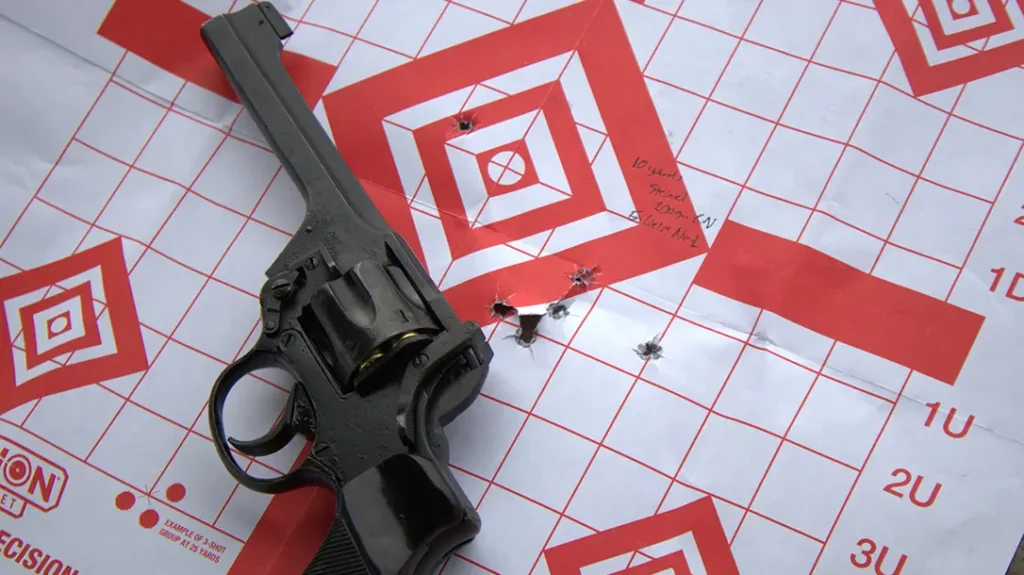
Accuracy Performance
So, by judging the book by its cover, I expected accuracy and shoot ability to be worse than they actually were. The No. 2 Mk. I* is surprisingly ergonomic, and despite it being double action only, I had no problems hitting targets out to twenty-five yards. Past fifty yards, the .38 S&W rounds had the trajectory of a thrown rock, and I had to walk rounds into the target to get hits out to 100. But that isn’t the kind of shooting a pistol is truly designed for.
I did not try to imitate the rapid hip shooting the Brits were training on during the war. Using the sights at a semi-rapid pace, I could keep six rounds into a 7-inch group at 25 yards just low of the bullseye using the Steinel load. At ten yards, I could punch those rounds into a two-inch pattern. The 200-grain Steinel military load shot well, and the Enfield bucked a bit when fired. You can scarcely notice a light wrap to the inside of the hand. That is not to say the .38/200 is a powerhouse.
Out of this revolver, it clocks in an average velocity of 678 feet per second, which is about on par with .455 Webley but with a somewhat lighter bullet. The report sounded more like a pop than a bang, and the sights were barely disturbed, which meant I could get six rounds out of the pistol quickly. The Remington 145-grain load was grossly underpowered and boasted no recoil at all. This load showed a five-shot average velocity of 552 feet per second and grouped three inches lower. This lighter load also gave me a 5-inch group at ten yards.
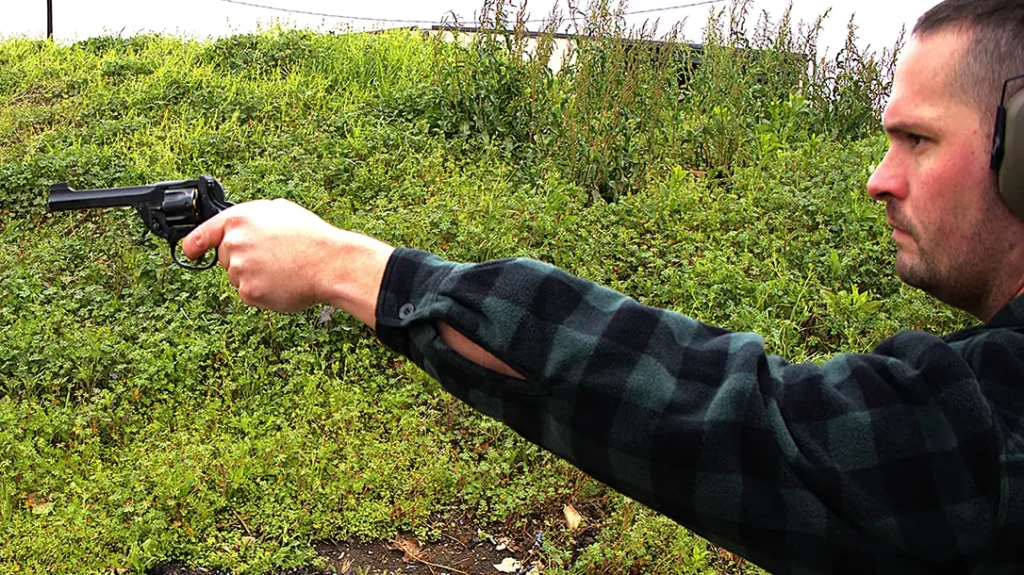
The Enfield No. 2 Revolver: The Worst Sidearm of World War II?
The Enfield No. 2’s history came about from cost-cutting and replaced a beloved stalwart in the Webley Mk. VI .455. Such a phenomenon is nothing new. The Beretta 92 replaced the beloved 1911 in American service in the 1980s partially because of cost considerations. But that did not make the Beretta 92 a bad handgun. Nonetheless, wartime production measures and the arrival of rival handguns that could be better supported by strained British logistics further muddies the Enfield No. 2 as a service pistol. Certainly, compared to modern pistols like the Colt M1911 and the Browning Hi Power, the Enfield is a conservative and even crude-looking design. However, one could say the same for objectively worse handguns like the Nambu and Nagant.
Unlike those handguns, it was reliable and easier to shoot. It even has ergonomic features that are only now becoming appreciated in the modern revolver world. The .38/200 cartridge is no .455, but it garners hatred not assigned to 8mm Nambu and .32 ACP. The Enfield No. 2 Mk. I, with its proprietary cartridge, entered the Second World War as a thoroughly average arm and left it as a relic. The Enfield revolver was a metaphor for the British Empire as it transitioned from its height to its dissolution.
